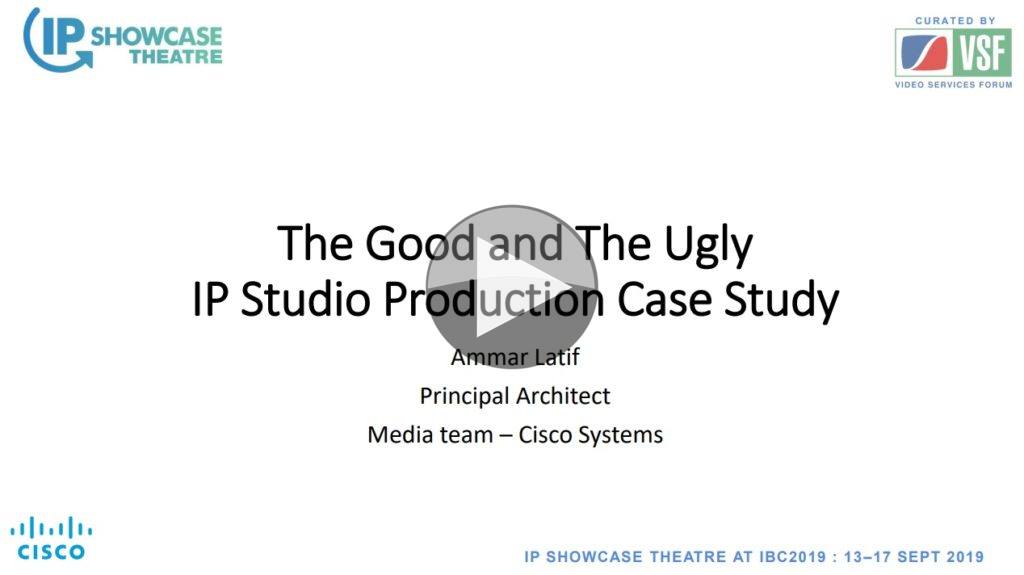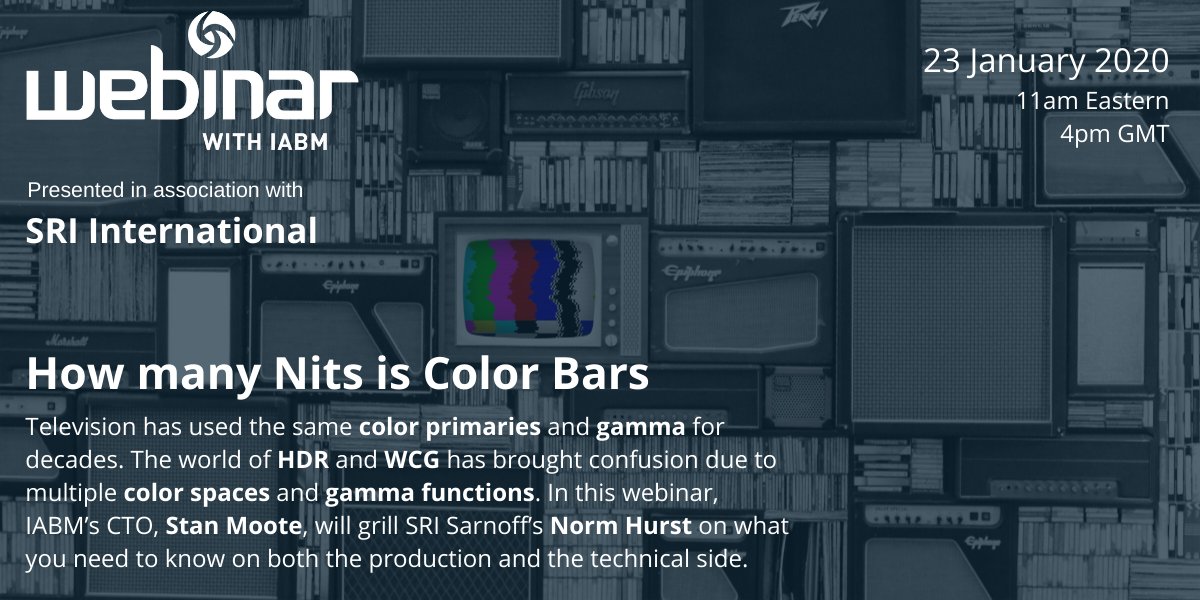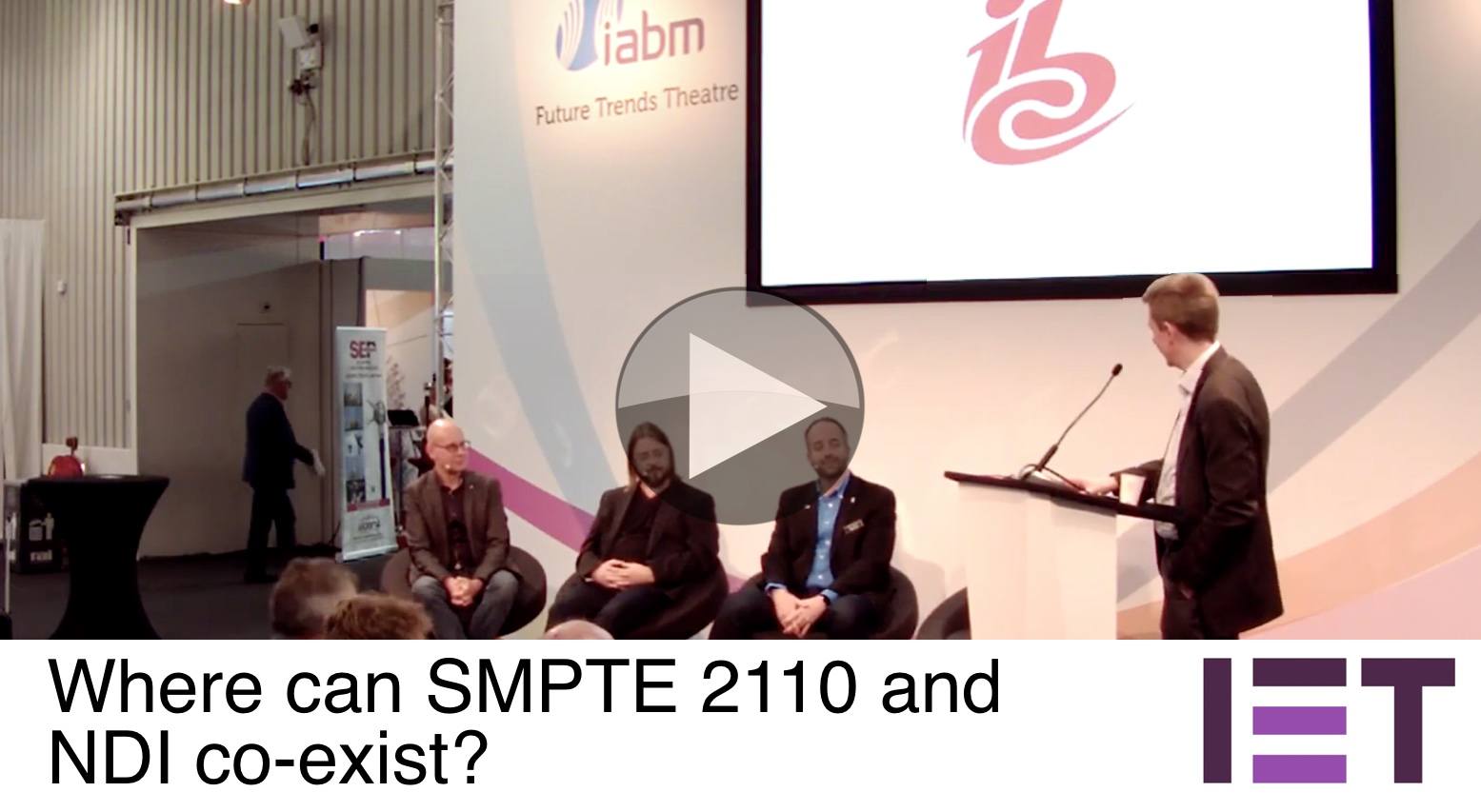What’s implementing SMPTE ST-2110 like in real life? How would you design your network and what were the problems? In this case study Ammar Latif from Cisco Systems presents the architecture, best practices and lessons learned they gleaned in this live IP broadcast production facility project designed for a major US broadcaster. Based on SMPTE ST-2110 standard, it spanned five studios and two control rooms. The central part of this project was a dual Spine-Leaf IP fabric with bandwidth equivalent of a 10,000 x 10,000 HD SDI router with a fully non-blocking multicast architecture. The routing system was based on Grass Valley Convergent broadcast controller and a Cisco DCNM media controller.
As the project was commissioned in 2018, the AMWA IS-04 and IS-05 specifications providing an inter-operable mechanism for routing media around SMPTE 2110 network were not yet available. Multicast flow subscription was based on a combination of IGMP (Internet Group Management Protocol) and PIM (Protocol Independent Multicast) protocols. While PIM is very efficient and mature, it lacks the ability to use bandwidth as a parameter when setting up a flow path. Ammar explains how Non-Blocking Multicast (NBM) developed by Cisco brings bandwidth awareness to PIM by signalling a type of data (video, audio or metadata).
The talk continues by discussing PTP distribution & monitoring, SMPTE 2022-7 seamless protection switching and remote site production. Ammar also lets us see how the user interfaces on the Cisco DCNM media controller were designed which include a visualisation of multicast flow, network topology and link saturation of ports.
You can find the slides here.
Speaker
 |
Ammar Latif Principal Architect, Cisco Systems |












